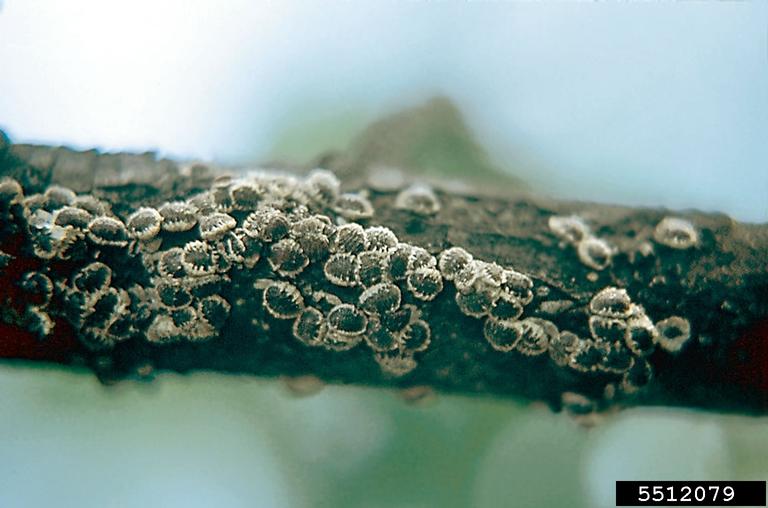Image Number: 5512079
Photographer:
Descriptor:
Adult(s)
Description:
The European elm scale once accounted for the death of up to 30 percent of the American elms in some western Kansas communities. This 1/4 inch (6 mm) scale is inconspicuous and often is overlooked until the “rain” of honeydew produced by large populations and the subsequent growth of sooty mold become a nuisance. The small brown shell surrounded by a white waxy material is a character that can be used to identify this species. Crawlers, active in early July, move to the bottom of leaves to feed. In late fall they move to the bark of the trees to overwinter. The crawlers complete their development on the bark in the spring when they turn into the familiar scale form.
The information for this submission into the image library was provided by the Kansas Department of Agriculture. A more detailed report on this submission can be found in the KDA Field Manual: Insects in Kansas. To obtain a copy of Publication #S131: Insects in Kansas contact K-State Research and Extension, Department of Communications distribution center at (785) 532-5830
Image type:
Field
You must attribute the work in the manner specified (but not in any way that suggests endorsement). You may not use this work for commercial purposes unless permission is granted by the photographer or copyright owner.
Image location:
Node Affiliation:
Image uploaded:
Friday, April 18, 2014
Image last updated:
Friday, May 2, 2014


